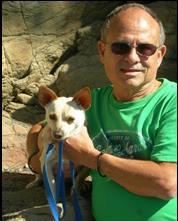John Eggler

John Eggler
Ethnic Studies and John Eggler at SBCC
As a new instructor at SBCC in the l970’s I became part of a unique and controversial move to create Ethnic Studies classes and an Ethnic Studies department. These attempts at SBCC and elsewhere had grown out of the Women’s Rights movement, and ethnic desire for more inclusion in American society.
Often these attempts challenged the idea that these courses belonged in traditional departments such as History, Sociology, or English. Much discussion, debate and many meetings ensued before these departments agreed to these changes at SBCC and elsewhere. One agreement made here was that courses focusing on the background of ethnic/racial groups in the US would remain in the traditional departments. Thus, Latin American and African history would remain in the History Department.
I myself had been hired in l970 to teach in the History Department. One of my assignments included the development and teaching of a Mexican American or Chicano history class. David Lawyer, Jr., in the Political Science Department was creating a Black History course.
The courses we were to teach did not exist at universities. In fact, I took Mexican American classes at UCSB after I began to teach these classes at SBCC. Besides having an MA in Latin America and African studies, I was bilingual and bicultural (Spanish and Mexican culture). Another factor which helped me was my attendance at SBCC for one year and two summers. I was well acquainted with this excellent school. Charles Atkinson in art, Norma Thompson in French, Tim Fettler in Philosophy, and Robert Casier in Political Science helped me a lot to become a more mature person. The small class size and the active interest of these professors helped me to take an active part in class and in the community.
Finally, I had three mentors in the History and Political Science Departments who provided much guidance. Bob Casier in Political Science, and George Frakes in History were like parents, and Curt Solberg, also in History, was like an elder brother.
Led by Alfonso Hernandez in the Spanish Department, Palo Buckelew also in Spanish, Dennis Ringer in Anthropology, David Lawyer, and myself, with the help of very strong support from students in MECHA (Movimiento Estudiantil de Aztlan), a new Chicano college organization, began to discuss the formation of the department. Later two of these students would become instructors in the department: Magdalena Torres and Manuel Unzueta
It seemed obvious to us that Mexican American and Black Studies courses would be the core of the department to later be joined by Native American studies and Asian American studies. Some courses would affect these four groups and other racial/ethnic groups. Courses such as Racism in America, and The Immigrant Experience in America would become a fifth area, Ethnic Studies. Eventually, Barbara Lindemann would come to teach the Immigration course. Years later, Dr. Daniel Moreno was hired to teach in Chicano studies and Ethnic Studies. He was primarily responsible for the Racism in America class after the death of David Lawyer
It seemed clear to us from the beginning that the Department had to be multi-disciplinary in nature. We believed a strength would be the fact that we all came from different disciplines, yet would work together. This would be a unique approach.
We also considered it important that the four of us teach in our departments: History, Political Science, Anthropology/Sociology, and Spanish. This would link the new department with traditional departments.
We also felt it would be important to have instructors who shared a culture and a language with their students to teach these courses if possible. This would provide examples of success to students who often did not continue into colleges. This was something that would help but was not an essential requirement.
We felt that a self-run department was significant in another way. A department could do its own scheduling, and control its own budget. Courses could thus be offered at hours when students were more likely to take classes. Since Dennis, David, Pablo and myself were junior faculty we were not likely to get prime teaching hours.
Before the creation of the department many courses were taught in various departments primarily focusing on the Black, and Mexican American experience. After much discussion in 1971 at the Division Chair Council and with the support of the superintendent – president, Dr. Glenn Gooder, it was recommended that the department be created.
In the next thirty years, there were good and bad moments for the department. At one point total department enrollment dropped, as it did for other academic areas. The personal impact on me was that I retrained to teach English as a second language. I took intensive classes at UCSB and obtained a TESOL certificate, which allowed me to teach these classes. For a few years I was working in three departments at the same time: History, Ethnic Studies and ESL. We in Ethnic Studies thought the department might continue to shrink.
On the other hand when Ethnic Studies courses were accepted as a way to fulfill a gender –multicultural requirement, and partially fulfilled an American Institution requirement, I quit ESL and returned to teach only History, and Chicano studies classes. Enrollment continued to improve after that.
The next development to affect the Department years later would be the death of David Lawyer, Jr., and a few years later the retirements of Dennis Ringer, Barbara Lindemann, and myself. Dr. Moreno, with serious medical problems, and a strong core of adjunct faculty continued to teach the department courses. The department is presently functioning under chair Craig Cook.